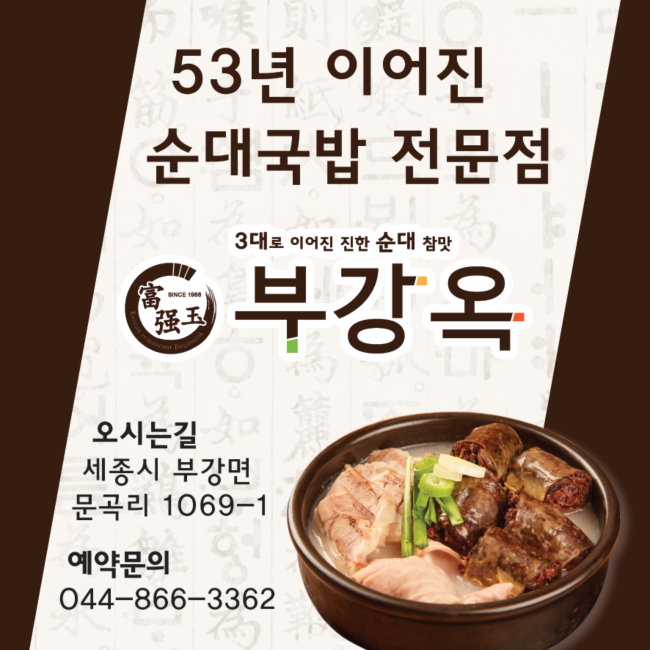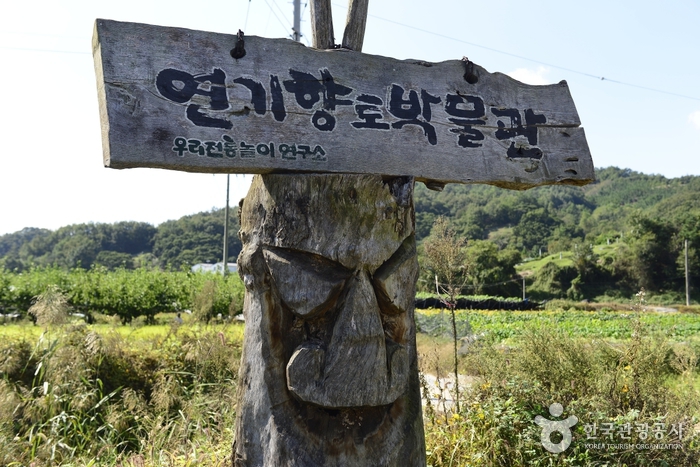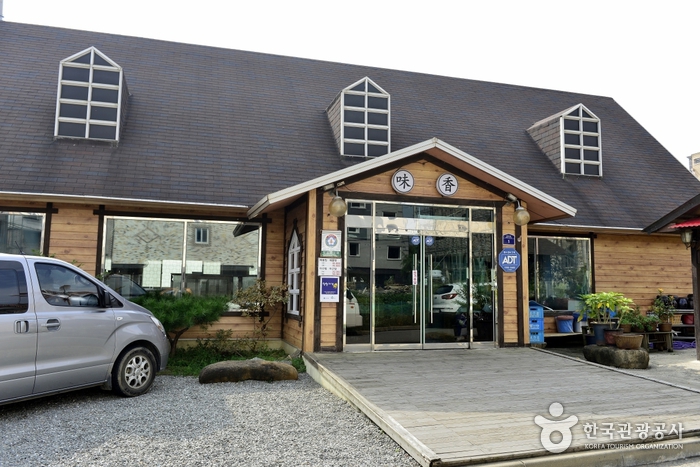Parque de la Ley de Salomón en Daejeon (대전솔로몬로파크)
16.3Km 2025-10-23
Expo-ro 219-39, Yuseong-gu, Daejeon
El Parque de la Ley de Salomón es un parque temático sobre justicia inspirado en el rey Salomón, quien impartió justicia en la sociedad mediante el trato justo. El parque temático ofrece una gran oportunidad de desarrollarse como un ciudadano apropiado en una democracia justa al experimientar la libertad, conocimiento y justicia de una sociedad gobernada por la ley. Creado y mantenido por el Departamento de Justicia de Corea, el Parque de la Ley de Salomón es un lugar que ofrece una manera fácil y divertida de aprender sobre las leyes y el sistema legal, tanto a jóvenes como a adultos.
Escuela Confuciana Jinjam Hyanggyo (진잠향교)
16.4Km 2023-02-22
Gyochon-ro 67, Yuseong-gu, Daejeon
La Escuela Confuciana Jinjam Hyanggyo fue establecida como santuario y para orientar a los estudiantes en 1405 (5º año de reinado del rey Taejong). No se ha podido encontrar información más detallada en los documentos que se poseen de aquella época. El edificio que sigue en pie se llama Daeseongjeon, y en su interior están guardadas tablillas ancestrales.
Templo Hangnimsa (학림사)
16.6Km 2023-01-16
Waryong-ro 353, Yeonseo-myeon, Sejong.
El templo Hangnimsa fue construido por monjes budistas. Aunque su origen es desconocido, se dice que se construyó debajo de la roca Hakbawi en el monte Seohaksan hace 600 años. El templo, tras su deterioro, fue restaurado en abril de 1965 y renombrado como Anyangsa. El nombre cambió de nuevo a Hangnimsa después de que la sala Daeungjeon y el dormitorio fueran reconstruidos en 1985.
Bugangok (부강옥)
16.7Km 2024-10-08
103, Bugangoecheon-ro, Sejong
+82-10-9577-8953
It is a restaurant that’s featured a lot in various media. This Korean restaurant is located in the city of Sejong. The representative menu is blood sausage and rice soup.
Museo Folclórico de Yeongi (연기향토박물관)
17.9Km 2021-03-17
Yangdae-gil, 34-4, Yeonseo-myeon, Sejong.
Abierto en agosto de 1966, el Museo Folclórico de Yeongi muestra reliquias encontradas en la antigua ciudad con especial autogobierno de Sejong. Unos 1.000 objetos, incluidas estatuas budistas, armas, pagodas, piezas de cerámicas, porcelana, y bronce, pinturas, cartas, utensilios de cocina y herramientas agrícolas, etc., están organizados según su época.
Templo Yeonhwasa (연화사)
18.0Km 2021-03-03
Yeonhwasa-gil 28-1, Yeonseo-myeon, Sejong
+82-44-862-8620
El templo Yeonhwasa se dice que fue construido por Hong Mun-seop. Después de tener un sueño, Hong excavó el sitio en el que se encuentra el templo para encontrar dos estatuas de piedras de Buda y construir un templo allí. Yeonhwasa fue designado como un templo tradicional en 1988 y está formado por la sala Muryangsujeon, la sala Samseonggak y Yosachae (residencia de los monjes).
Solía haber un edificio con el techo de tejas, pero tras el descubrimiento de Muinmyeongseokbulsangbudaejwa (un pedestal budista con una inscripción "Muin", Tesoro Nacional Nº 649), el tejado fue mejorado. El lado del Muinmyeongseokbulsangbudaejwa tiene una forma de trapecio, y está datado en la era Silla. El templo es el hogar de Chiljonseokbulsang (piedra con siete imágenes budistas, Tesoro Nacional Nº 650), junto a las piedras de Biamsa y Jeonganmyeon.
Parque Natural Gobok (고복자연공원)
18.3Km 2025-08-04
Dosingobok-ro 586, Yeonseo-myeon, Sejong
El Parque Natural Gobok es un embalse para la agricultura de 770.000 m2. Fue construido para proveer agua a los campos, pero el abundante número de peces del lugar atrae a pescadores de todo el país. Esto ha hecho que se convirtiese en un parque provincial. Son 1.840.000 metros cuadrados de parque con otros puntos interesantes cercanos como un bosque, la cueva Yonggul y el templo Sinheungsa del monte Obonsan. El parque posee esculturas al aire libre y una gran plaza central. El pabellón Millakjeong ofrece una vista panorámica del embalse. Los amantes de la comida podrán disfrutar en cualquiera de los restaurantes de esa área, especializados sobre todo en hanbang-ori (carne de pato) y megi-maeuntang (sopa picante de pescado).
Sanjang Garden (산장가든)
18.5Km 2025-05-19
1131-7, Dosingobok-ro, Yeonseo-myeon, Sejong-si
Centro de Arte y Cultura de la Ciudad de Sejong (세종문화예술회관)
18.9Km 2021-04-05
Munyehoegwan-gil 22, Jochiwon-eup, Sejong
Situado en la ciudad de Sejong, el Centro de Arte y Cultura es un espacio multicultural en el que se realizan actuaciones y exposiciones. Ofrece diferentes oportunidades creativas a los artistas locales y también permite que los residentes disfruten de la cultura y del arte. El centro está formado por un salón para actuaciones con un gran escenario y espacio para 870 asistentes, y diferentes salas para exhibiciones.
Mihyang (미향)
19.0Km 2025-05-15
1, Munhwa 4-gil, Jochiwon-eup, Sejong
Mihyang is a seafood restaurant specializing in haemul-jjim (steamed seafood).




 Español
Español
 한국어
한국어 English
English 日本語
日本語 中文(简体)
中文(简体) Deutsch
Deutsch Français
Français Русский
Русский